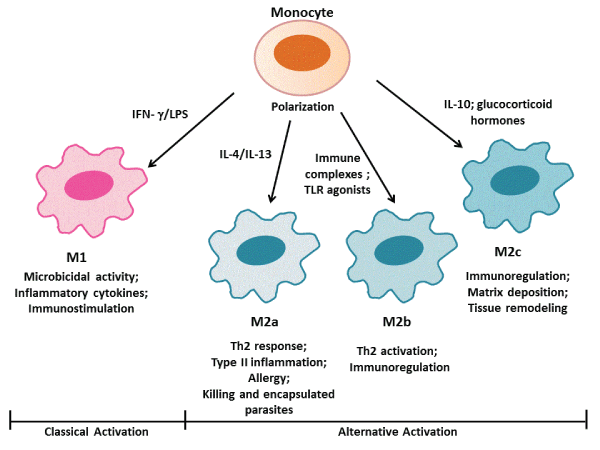
 |
| Figure 1: Macrophage polarization. Macrophage micro-environment stimuli define differential macrophage polarization via classical activation (M1) or alternative activation (M2). Pathogen-derived LPS alone or in combination with IFN-γ leads to classical activation of M1 macrophages, which improves microbicidal activity and secretion of pro-inflammatory mediators. According to the host-parasite microenvironment, alternative macrophage activation could be subdivided into three subpopulations. M2a differentiation is promoted by IL-4 or IL-3, and this subpopulation is associated with Th2 response, allergy process, internalization, and parasite killing. M2b is related to the presence of immune complexes, TLR or IL-1R agonists, and promotion of immunoregulation. Glucocorticoids and IL-10 secretion lead to differentiation into M2c, which also induces immunoregulation, tissue remodeling, and repair. |